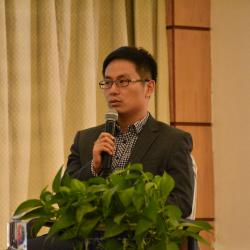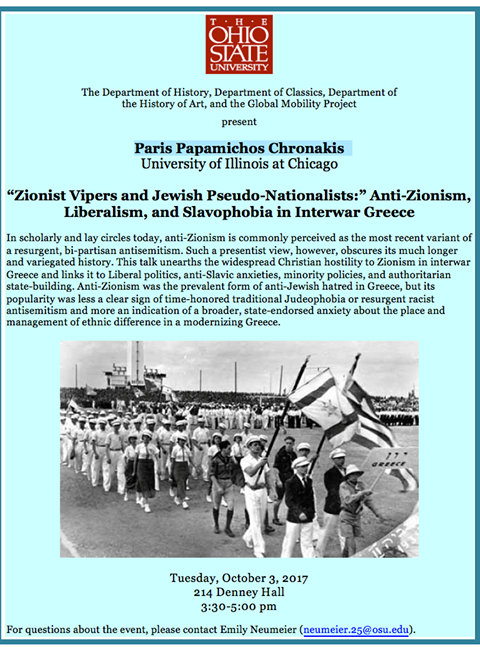by Natalia Zotova, PhD Candidate, Department of Anthropology, The Ohio State University.
On 22 February Dr. Maurizio Albahari, an associate professor at the University of Notre Dame, gave a lecture “Rethreading the Mediterranean: Disquieting Art and Migrant Democracy” at Mershon Center for International Security Studies. The lecture was co-sponsored by the Department of Anthropology, the Mershon Center for International Security Studies, the Department of French & Italian, and the Global Mobility Project.
In his lecture Dr. Albahari disentangled representations of the “migrant crisis” unfolding in the Mediterranean. In the recent years hundreds of thousands refugees have embarked on a dangerous journey across the sea to flee war, persecution, and political and economic insecurity in their home countries. While many were able to land safely on the shores of the European countries, the sea claimed thousands of lives on the “world most dangerous border”. EU politicians, human rights activists, media and local population addressed complex dimensions of emergent humanitarian and political crisis. However, in the flurry of media representations, activism and even fake news, the asymmetries of power relationships mainly go under the radar of popular narrative and academic inquiry.
Dr. Albahari argued that the right to seek asylum in Europe had turned into a commodity, where migrants either pay with their lives or have to pay smugglers and other middlemen. While the Mediterranean today is at the conflux of trade, politics, ideology, border enforcement and unauthorized mobility, humans have the least power to move from the global south to the global north. In his recent book “Crimes of Peace” (2015) Dr. Albahari developed an ethnography of state power and indifference, which perpetuates the dynamics of the world’s deadliest border in the Mediterranean. Arguing for an overlooked asymmetry in the attitudes to commodities such as gas, oil and natural resources, and arriving migrants, the speaker discussed broader power inequalities between EU and countries of the global south. Dr. Albahari suggested conceptualizing the borders as “diffuse” rather than “open” or “closed”. European borders are permeable for conditional aid, military convoys, as well as holders of the EU passports traveling southward. And while diffuse borders welcome commodities; the people who seek safety and better life in Europe are turned away, repatriated and marginalized.
To illustrate his argument Dr. Albahari showed a political cartoon, created by refugees. That was an image of a solitary figure sitting on a large pipe going under a barber fence border. The caption read: “Oil goes through, we don’t”. Analytical attention to the agency of migrants and refugees was one of major arguments of the speaker. Dr. Albahari called for “disquieting art”, which could become a powerful engagement tool. Pieces of art developed by migrants and contemplated by public can create the space for empathy, understanding and healing. Celebrating the voice of refugees through artistic expression we could move away from dichotomies of victimization or blaming. In Dr. Albahari’s opinion, that is immensely important in order to treat political divisiveness and power asymmetries in both Europe and the world.











